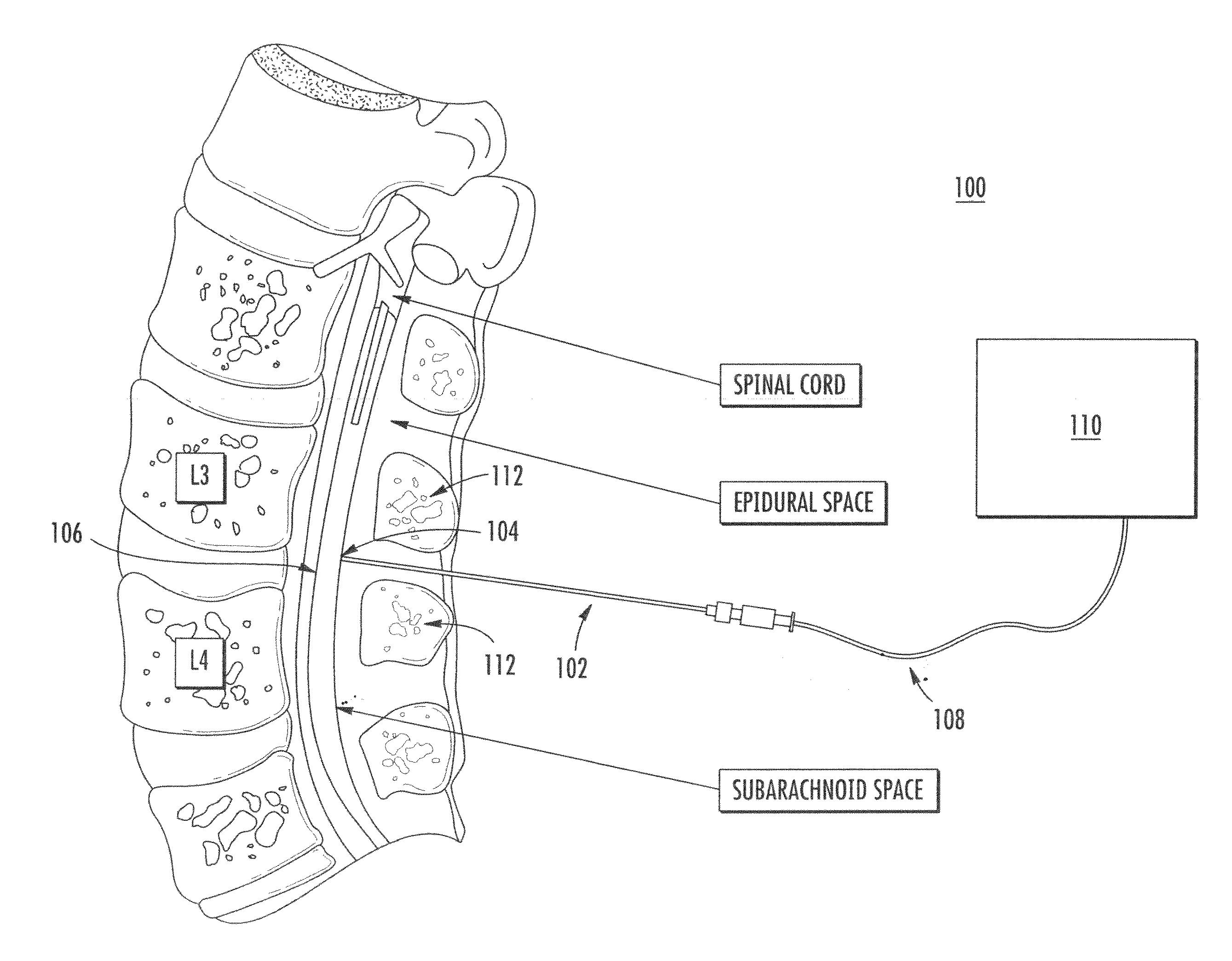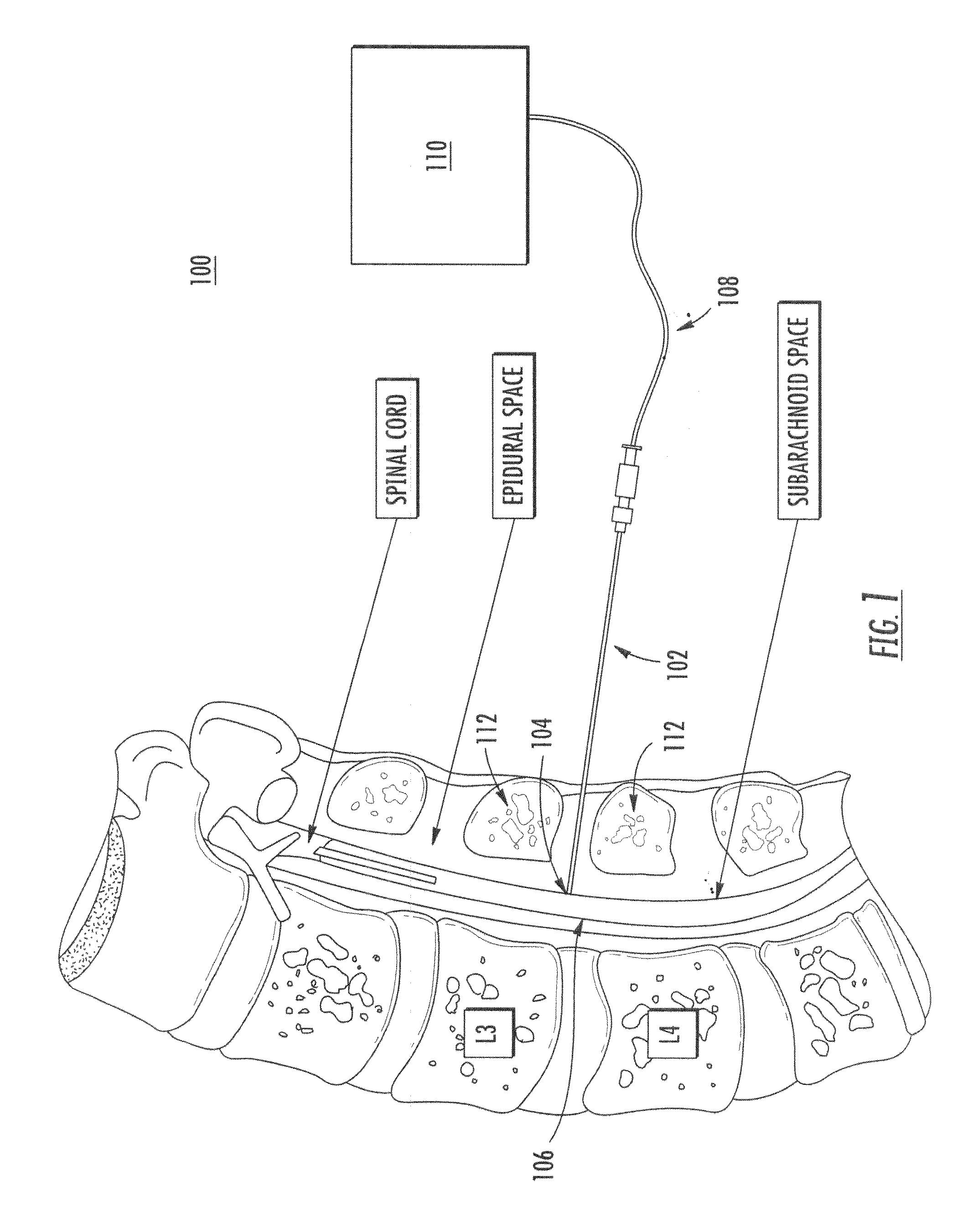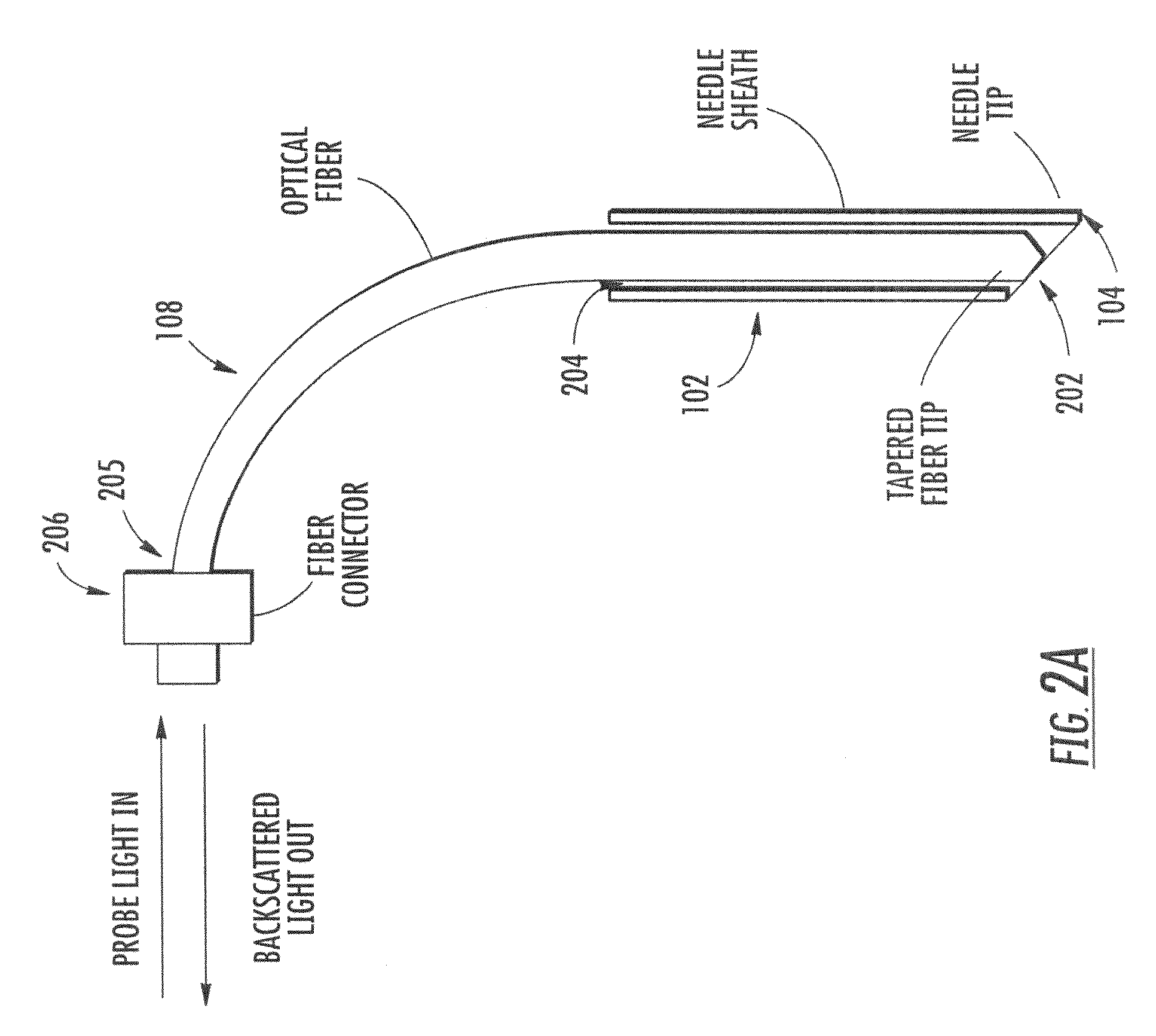Spinal needle optical sensor
a technology of optical sensor and spinal needle, which is applied in the field of medical sensors, can solve the problems of prohibitively expensive general use, difficult to perform lumbar punctures in the conventional manner, and substantial patient discomfort, and achieve the effects of reducing patient discomfort, reducing the number of traumatic spinal taps, and guiding accurately
- Summary
- Abstract
- Description
- Claims
- Application Information
AI Technical Summary
Benefits of technology
Problems solved by technology
Method used
Image
Examples
Embodiment Construction
[0042]Referring to FIG. 1, spinal needle sensor 100 includes spinal needle 102. As shown, spinal needle 102 may be inserted through a patient's back, and needle tip 104 directed to a desired position, e.g., the spinal dura 106. Optical fiber 108 connects needle 102 to optical coherence tomographic (OCT) system 110. As described in detail herein, OCT system 110 optically senses the region in front of needle tip 104. This allows a user to more accurately insert needle 102 and position needle tip 104 in a desired position. For example, information provided by OCT system 110 may be used during insertion of needle 102 to avoid contact of needle tip 104 with areas of bone tissue 112.
[0043]Referring to FIG. 2A, a single optical fiber 108 is used to transport the probe light from OCT system 110 (not shown) to needle tip 104 and then transport the light backscattered from tissue in front of needle tip 104 to the OCT system 110. Spinal needle 102 has a hollow cavity 204. Fiber 108 extends thr...
PUM
 Login to View More
Login to View More Abstract
Description
Claims
Application Information
 Login to View More
Login to View More - R&D
- Intellectual Property
- Life Sciences
- Materials
- Tech Scout
- Unparalleled Data Quality
- Higher Quality Content
- 60% Fewer Hallucinations
Browse by: Latest US Patents, China's latest patents, Technical Efficacy Thesaurus, Application Domain, Technology Topic, Popular Technical Reports.
© 2025 PatSnap. All rights reserved.Legal|Privacy policy|Modern Slavery Act Transparency Statement|Sitemap|About US| Contact US: help@patsnap.com



